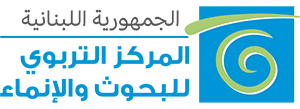Cognitive constructivism and social constructivism manifested in the ongoing teacher training program
Cognitive constructivism and social constructivism
manifested in the ongoing teacher training program
 The ongoing teacher training program (OTTP) is a professional development program that evolved, developed and progressed due to the academic needs of the learning community. The OTTP did not emerge haphazardly and arbitrarily out of nowhere, but it appeared after a thorough scrutiny of the learning process and outcome. Listening to the difficulties that teachers face, analyzing the mistakes and the difficulties of the learners and evaluating the learning outcome present a broad spectrum of the requirements to raise the teaching standards and improve the academic results.
The ongoing teacher training program (OTTP) is a professional development program that evolved, developed and progressed due to the academic needs of the learning community. The OTTP did not emerge haphazardly and arbitrarily out of nowhere, but it appeared after a thorough scrutiny of the learning process and outcome. Listening to the difficulties that teachers face, analyzing the mistakes and the difficulties of the learners and evaluating the learning outcome present a broad spectrum of the requirements to raise the teaching standards and improve the academic results.
Training sessions are designed and conducted to satisfy the needs of the learning community for raising the teaching standards. The preparation of these sessions goes through a certain procedure. Primarily, the titles of training sessions are selected based on the cooperative work of the regional coordinator and the trainers of each subject; then, objectives targeting the needs are assigned; and finally, suitable activities are set to achieve the proposed objectives. The success of any session does not only depend on the delivered material but also on the mode of delivering the material along with the learning theories put in practice to achieve the objectives. These sessions rely mostly on the “cognitive constructivism” approach and on the “social constructivism” approach to learning.
There are many different approaches to learning. Two of the basic types of the learning theories are : the cognitive constructivist, where knowledge systems of cognitive structures are actively constructed by learners based on existing structures, and the social constructivist, where knowledge is socially constructed. These approaches actively involve the learners in the learning process and get the essence of the acquired knowledge from the society.
The most influential advocate of cognitive constructivism was Jean Piaget, the Swiss psychologist. Piaget rejected the idea that learning is the passive assimilation of given knowledge (Behaviorist approach). Instead, he proposed that learning is a dynamic process during which learners actively construct knowledge by creating and testing their own theories of the world. Assimilation occurs when individuals' experiences are absorbed into their internal representation of the world. They assimilate the new experience into an already existing framework. Accommodation is the process of reframing one's mental representation of the external world to fit new experiences.
Social constructivism is a variety of cognitive constructivism that emphasizes the collaborative nature of learning. Social constructivism was developed by the Soviet psychologist, Lev Vygotsky. He argued that all cognitive functions originate in, and must therefore be explained as products of, social interactions; he also explained that learning was the process by which learners were integrated into a knowledge community and that new information is assimilated and accommodated through collaboration. There is a great deal of overlap between cognitive constructivism and social constructivism. However, social constructivism, has much more room for an active, involved teacher.

These theories are not mentioned here for sheer knowledge or information recall; the purpose of referring to these theories is to reveal the way they are put in practice in the continuing teacher training program. Consequently, these theories are practiced in the training sessions to be applied in the teaching process.
We start by assuming that our teachers already have the cognitive structures necessary to deliver their teaching subjects. Each problem they encounter in their profession and overcome through training sessions reforms the structure of their previous knowledge. To illustrate the jargon used in these expressions, let us examine a training session in science and take as an example one on the titles tackled to improve the learning outcome.
Science teaching in Lebanon faces various perceptible difficulties and obvious troubles. The most conspicuous of these problems is the difficulty of the teaching language. An omnipresent problem in science teaching is delivering the subject in the second acquired language of the learner. The primary language of the learner is Arabic which is acquired at home and in the environment surrounding the learner; the secondary language is English or French acquired afterwards in schools, in the environment. This second language is used to teach Science. This phenomenon may have a positive influence on the learners’ future, but at the same time, is a burden that encumbers the teachers and the learners and hinders the learning procedures. The problem arises and grows because the learner has difficulties in understanding the scientific facts and comprehending the concepts used to present the fact; moreover, students' failure to express themselves in a foreign language impedes their capacity and hinders their creativity.
The designers of the continuing training program are aware of this complication and have prepared sessions that help the teachers rise above this difficulty and prepare lessons and activities that allow them to use science equally as a tool to improve mastery of the foreign language used to teach science. Through this dynamic process the teachers are actively involved and trained to overcome problems they come across. They accommodate this new experience to their own knowledge and develop their cognitive structure.
The successive training sessions “Improve Your Students’ Language” which are prepared for the science teachers in the Bekaa region, allow the trainees to improve their linguistic abilities making them more confident of their teaching language.
Throughout the session the trainees comprehend the meaning of the prefixes and the suffixes used in science, grasp the meanings of the roots in scientific terminology, prepare activities from the science topics that improve the oral and written communicating skills of the learners; and so they become capable of teaching science and language at the same time, thereby also improving the Science standards. It is worth mentioning that the trainer facilitates learning by providing an environment that promotes discovery and assimilation. In other activities, collaborative learning is facilitated and guided by the trainer through group work. In short, trainees practice the activities - which are arranged according to the cognitive constructivist and social constructivist approaches - and see the efficiency of the used method. This phase motivates and encourages them to apply such methods and activities in class hence improving their students’ language. When one of the major problems that science teachers encounter is resolved, the problems that students encounter can be resolved.
What does the above procedure of teacher training tell us? It shows that when a problem is faced in the learning society, solutions are discovered through collaborative work and the teaching method is modified. This is a true application of the social constructivism.

In discussing the teaching methods, we tackle other major needs in the learning community: we face the need to integrate the teaching subjects and to cooperate for the sake of global learning so as to prepare individuals fit to live and succeed in the society. We also encounter the need to continuously develop our abilities so as to be lifelong learners. A lifelong learner is an individual that benefits from every single opportunity provided in the society to improve his/her abilities; so, think of the continuing training sessions and grasp any chance you come across for the benefit of our children and their prosperous future. I invite the readers to think of ways to improve their skills, to apply and practice learning theories, and to think about the importance of integrating the teaching subjects and cooperating with other educators to attain the highest academic levels.
Resources



